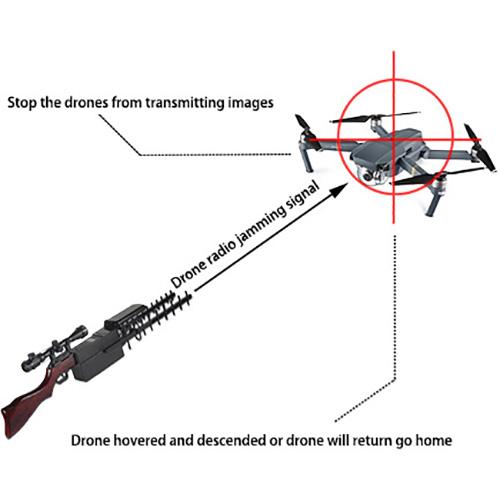If the hum of an overhead drone still freaks you out, get used to it! The use of drones has expanded into all walks of life (entertainment, science, agriculture, journalism, medicine, military, logistics, etc.) and inevitably to the darker side as well. Criminal and terrorist groups have discovered the versatility of drones, and they now routinely deploy them as a sort of small air force for surveillance, delivery of illicit cargo, or full-scale attacks. Rogue drones, individually or in groups, pose a threat that every law enforcement, security advisor, and defense agency must consider. One of the first countermeasures developed against drones was the drone jammer, which targeted the communication channel between the drone and its operator. Fixed area solutions as well as mobile handheld transmitters are readily available to protect valuable assets from drone threats that can cause all kinds of damage. While this is a relatively low-cost solution, its simplicity may limit its usefulness.

Limitations of Interference
A drone is small, a small point in the vast airspace surrounding any target, be it a person or facility, stationary or mobile. For example, in order to protect an airport from drone threats by interfering with its radio frequency communications, it is necessary to detect the presence of drones, identify the communication frequency and jam it within a certain distance to eliminate the threat. These variables enable targeted Jamming to become an unreliable solution because it takes some time to lock and analyze the signal, and frequency switching is common. On the other hand, broad defenses such as total jamming can lead to many unforeseen situations, since RF signals have a very wide range of civilian uses (the most important of which is air traffic control).
Additionally, since RF signals are susceptible to random interference, the drone industry is evolving to address this vulnerability by securing communication channels (necessary for securing even the most casual day-to-day operations, such as delivering packages to the correct address) . While alternative guidance methods, such as GPS positioning, can create a "dark" drone that can accomplish its mission independently of any further instruction/communication with the operator.
While drone signal jammers are undoubtedly the most common method of jamming and defending against rogue drones, it is clear that as drones become more widely used and their technology more sophisticated, countermeasures against them Will need to keep up.
Related Articles
What do you need to disable bombing drones?
How drone jammers work against drones?
Drone jammers are used by troops
The Necessity of Drone Jammers in Prisons
Four major anti-drone technologies







